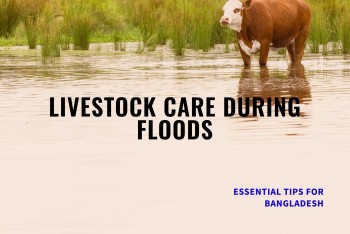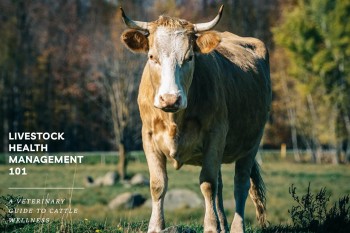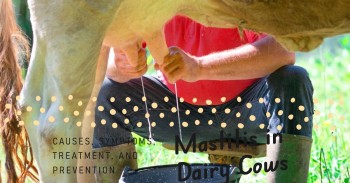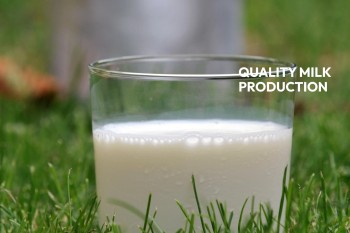Lumpy Skin Disease in Cattle: Definition, Epidemiology, Transmission,
Symptoms, Diagnosis, Treatment, and Prevention 🦠🔬
Lumpy Skin Disease (LSD) is a
highly contagious viral disease that affects cattle worldwide. This blog post
provides a comprehensive overview of LSD, covering its definition, synonyms,
epidemiology, transmission, signs and symptoms, diagnosis, treatment, and
prevention and control. Let's dive in and learn more about this concerning
disease that impacts the livestock industry.
I. Definition:
Lumpy Skin Disease (LSD) is a
viral disease that affects cattle, characterized by the formation of nodules or
lumps on the skin. These nodules can lead to reduced milk production, weight
loss, and even death in severe cases. The disease is caused by a poxvirus and
can have a significant impact on the health and productivity of infected
cattle.
II. Synonyms:
Lumpy Skin Disease is known by
several other names, including Neethling virus disease, nodular dermatitis, and
Knopvelsiekte. These terms are used interchangeably to refer to the same viral
disease in cattle.
III. Epidemiology:
Lumpy Skin Disease is prevalent
in sub-Saharan Africa, the Middle East, and parts of Asia. While it primarily
affects cattle, it can also infect other ruminants such as sheep and goats. The
disease has a substantial economic impact on livestock production, trade, and
rural livelihoods in affected regions.
IV. Transmission:
The primary mode of transmission
for LSD is through insect bites, particularly by mosquitoes and biting flies.
These insects act as vectors, carrying the virus from infected animals to healthy
ones. Additionally, direct contact with infected animals or contaminated
materials, such as bedding or equipment, can also contribute to the spread of
the disease. The virus can survive for several weeks in the environment,
further facilitating its transmission.
V. Signs and Symptoms:
LSD can present with various
clinical signs, but commonly observed symptoms include fever, lethargy, loss of
appetite, and the formation of skin nodules or lumps. These nodules can range
in size from a few millimeters to several centimeters and can appear anywhere
on the body, including the udder, teats, and genitals. The nodules may cause
pain, itching, and discomfort for the affected animals. In severe cases, LSD
can lead to reduced milk production, weight loss, and even death.
VI. Diagnosis:
Veterinarians can diagnose LSD
based on the clinical signs observed in the affected animals, along with a
thorough history of the disease. Laboratory tests, such as virus isolation and
serology, can confirm the presence of the poxvirus responsible for LSD. It is
important to differentiate LSD from other skin diseases in cattle, such as
cowpox, bovine papular stomatitis, and infectious bovine rhinotracheitis, to
ensure appropriate treatment and control measures.
VII. Treatment:
Currently, there is no specific
treatment available for LSD. However, supportive care can help alleviate the
symptoms and improve the overall condition of infected animals. This includes
providing pain relief, managing wounds caused by the nodules, and administering
fluid therapy to maintain hydration. It is crucial to seek guidance and
treatment from a registered veterinarian experienced in dealing with LSD cases.
VIII. Prevention and Control:
Vaccination is considered the
most effective approach to prevent LSD. Inactivated and live attenuated vaccines
are available for immunization of cattle against the disease. Implementing
strict biosecurity measures is also crucial, including controlling insects that
act as vectors, practicing quarantine for new animals, and regularly
disinfecting equipment. Additionally, any suspected cases of LSD should be
immediately reported to local veterinary authorities to prevent further spread
and initiate appropriate control measures.
By understanding and implementing
these measures, we can effectively prevent and control the spread of Lumpy Skin
Disease in cattle, safeguarding their health and the productivity of the
livestock industry.
Lumpy Skin Disease (LSD) is a
viral disease that affects cattle, characterized by the formation of nodules or
lumps on the skin. These nodules, also known as skin papules, can vary in size
and appearance, ranging from a few millimeters to several centimeters in
diameter. The disease is caused by a poxvirus, specifically a member of the
Capripoxvirus genus.
LSD can have detrimental effects
on infected cattle, leading to various health issues and economic losses. The
formation of nodules can result in reduced milk production and weight loss,
impacting the productivity and profitability of dairy and beef operations. In
severe cases, the disease can even be fatal, particularly when complications
arise or secondary infections occur.
The poxvirus responsible for LSD
primarily targets the epithelial cells of the skin and mucous membranes,
leading to the characteristic nodule formation. The virus undergoes replication
within these cells, causing cellular changes that result in the visible skin
lesions. The disease can also affect lymph nodes, resulting in their
enlargement.
It is important to note that LSD
is specific to cattle and does not pose a direct risk to humans. However, due
to its highly contagious nature, the disease can have significant implications
for the livestock industry, trade, and rural livelihoods in affected regions.
Rapid spread and outbreaks can result in substantial economic losses,
disruption of production systems, and limitations on international trade of
cattle and their products.
Lumpy Skin Disease (LSD) is a
viral disease that specifically affects cattle. It is characterized by the
development of skin nodules and lumps, also known as skin papules, on the
animal's body. These nodules can appear anywhere on the skin, including the
udder, teats, genitals, head, neck, back, and limbs.
The nodules associated with LSD
can vary in size, ranging from a few millimeters to several centimeters in
diameter. Initially, they may be small and firm, but over time, they can grow
larger and become more prominent. The texture of the nodules can also change as
the disease progresses, with some becoming softer or even ulcerated.
The skin nodules in LSD are
typically raised, round or oval-shaped, and may be slightly elevated from the
surrounding skin. They can have a pink, red, or grayish appearance, and in some
cases, may have a central depression or a scab-like crust. The number of
nodules can vary from a few to numerous lesions covering a large portion of the
body.
It is important to note that while
LSD primarily affects the skin, it can also affect other tissues and organs in
the body. In severe cases, the disease can lead to the involvement of internal
organs, such as the lungs, liver, and spleen, causing additional complications
and potentially increasing the risk of mortality.
The presence of skin nodules and
lumps is a hallmark feature of LSD and serves as a key diagnostic indicator for
the disease. It is important for cattle owners, herders, and veterinarians to
be vigilant in identifying these characteristic skin lesions, as early
detection can aid in implementing appropriate control measures and preventing
further spread within the herd.
LSD is a highly contagious
disease, and infected animals can transmit the virus to susceptible individuals
through direct contact or through the mechanical transfer of the virus via
contaminated materials such as equipment, bedding, or even insects. Therefore,
prompt identification, isolation, and appropriate management of affected
animals are crucial in containing the disease and preventing its spread to
unaffected individuals.
By recognizing the specific
characteristics of LSD, including the development of skin nodules and lumps in
cattle, stakeholders in the livestock industry can play a vital role in
controlling and preventing the spread of this viral disease, safeguarding the
health and well-being of their animals and the overall productivity of their operations.
Lumpy Skin Disease (LSD) in
cattle can have significant impacts on animal health, productivity, and overall
profitability for cattle owners. The disease can lead to various detrimental
effects, including reduced milk production, weight loss, and even potential
fatality in severe cases.
1. Reduced Milk Production:
LSD can have a direct impact on
the milk production of affected cows. The presence of skin nodules and lumps
can cause discomfort and pain, leading to a decrease in feed intake and subsequent
reduction in milk yield. Additionally, the disease may affect the udder and
teats, causing inflammation and impairing milk letdown. These factors combined
can result in a decline in milk production, which can have economic
implications for dairy farmers.
2. Weight Loss:
Cattle affected by LSD may
experience weight loss due to various factors. Reduced appetite, as a result of
general malaise and discomfort caused by the disease, can lead to decreased
feed consumption and nutrient intake. The diversion of energy and resources
towards combating the infection and healing the skin lesions can further
contribute to weight loss. In severe cases, where the disease progresses and
complications arise, the overall health of the animal may deteriorate, exacerbating
weight loss.
3. Potential Fatality:
While not all cases of LSD result
in fatality, severe forms of the disease can lead to significant health
complications and even death. The progression of the disease can involve the
spread of the virus to internal organs, such as the lungs, liver, and spleen.
This systemic involvement can cause severe illness, organ dysfunction, and
secondary infections, ultimately leading to the death of the affected animal.
Younger or immunocompromised cattle are particularly vulnerable to severe forms
of LSD.
The impacts of reduced milk
production, weight loss, and potential fatality highlight the importance of
timely diagnosis, treatment, and prevention strategies for LSD. Prompt
identification and isolation of affected animals, along with appropriate
supportive care and management, can help mitigate the negative consequences of
the disease. Additionally, implementing vaccination programs and practicing
good biosecurity measures can aid in preventing the introduction and spread of
LSD within cattle populations, minimizing its impact on productivity and animal
welfare.
By understanding the potential
consequences of LSD and taking proactive measures, cattle owners can protect
the health and well-being of their animals, maintain productivity levels, and
sustain the economic viability of their operations.
Lumpy Skin Disease (LSD) is known
by various synonyms, which are alternate names used to refer to the same viral
disease in cattle. These synonyms include:
A. Neethling Virus Disease:
Neethling virus disease is a term
used to describe LSD, named after Dr. Neethling, who first isolated the virus
in the 1940s. The virus responsible for causing LSD belongs to the
Capripoxvirus genus, and Neethling virus is one of the strains within this group.
B. Nodular Dermatitis:
Nodular dermatitis is another
term used interchangeably with LSD. It refers to the characteristic symptom of
the disease, which is the formation of nodules or lumps on the skin. The
nodules can vary in size and appearance and are a prominent feature of the
disease.
C. Knopvelsiekte:
Knopvelsiekte is a term commonly
used in South Africa, where LSD is prevalent. It is an Afrikaans term that
translates to "button disease" in English. The name refers to the
button-like nodules that develop on the skin of infected cattle, resembling
small knobs or buttons.
The use of these synonyms may
vary depending on the region, local language, or historical context. However,
regardless of the name used, it refers to the same viral disease characterized
by the formation of skin nodules and lumps in cattle. Understanding these
synonyms is important for effective communication and collaboration among
veterinarians, researchers, and stakeholders in the livestock industry working
to diagnose, manage, and control LSD.
Lumpy Skin Disease (LSD) has a
specific epidemiology, with certain regions being more affected than others.
Here are the key points related to the epidemiology of LSD:
A. Prevalence:
LSD is most prevalent in
sub-Saharan Africa, the Middle East, and parts of Asia. These regions
experience a higher incidence of the disease compared to other parts of the
world. Within sub-Saharan Africa, countries like Kenya, Uganda, Tanzania, and
South Africa have reported significant outbreaks of LSD.
B. Affected Animals:
While LSD primarily affects
cattle, it can also infect other ruminant animals, such as sheep and goats.
However, cattle are the main hosts and are most susceptible to the disease. The
prevalence of LSD in these additional species may vary depending on the region
and specific epidemiological factors.
C. Economic Impact:
Lumpy Skin Disease can have a
substantial economic impact on livestock production, trade, and rural
livelihoods. The disease affects both small-scale and large-scale farmers, with
consequences that ripple through the entire livestock industry. The economic
impacts arise from several factors:
1. Reduced Productivity: Infected
cattle may experience reduced milk production, weight loss, and decreased
reproductive performance, resulting in financial losses for dairy and beef
operations.
2. Trade Restrictions: Outbreaks
of LSD can lead to trade restrictions on the movement of cattle and their
products, both domestically and internationally. This can have severe
implications for the livestock trade and export-oriented economies.
3. Cost of Control Measures:
Implementing control and prevention measures, including vaccination campaigns,
vector control, and biosecurity practices, incurs costs for farmers, veterinary
services, and governments. These expenses can strain limited resources,
particularly in regions with limited infrastructure and financial capacities.
4. Livelihoods of Rural
Communities: Many communities in affected regions rely on livestock rearing as
a major source of income and livelihood. LSD outbreaks can disrupt their
economic stability, leading to decreased income, food insecurity, and reduced
access to essential services.
Understanding the epidemiology of
LSD, including its prevalence, affected animals, and economic impact, is
crucial for designing effective control strategies, implementing surveillance
programs, and promoting regional and international collaboration. By addressing
the disease at both individual and population levels, stakeholders can work
towards mitigating the burden of LSD on livestock production, trade, and the
well-being of rural communities.
The transmission of Lumpy Skin
Disease (LSD) involves various modes and factors. Here are the key points
related to the transmission of LSD:
A. Primary Vectors:
The primary mode of LSD
transmission is through insects, particularly mosquitoes and biting flies.
These insects act as biological vectors, carrying the LSD virus and
transmitting it to susceptible animals when they bite. Mosquitoes, in
particular, have been identified as efficient vectors for the disease. The
virus can replicate within the vector's body, allowing for its transmission
during subsequent blood-feeding.
B. Other Modes of Transmission:
Apart from insect vectors, LSD
can also be transmitted through direct contact between infected and susceptible
animals. This can occur during nose-to-nose contact, mounting, or through
contact with secretions from infected animals. Additionally, LSD can be spread
indirectly through contaminated materials, such as equipment, bedding, or feed.
The virus can persist on these surfaces and act as a source of infection if
other animals come into contact with them.
C. Environmental Survival:
The LSD virus has the ability to
survive in the environment for an extended period. It can persist in
contaminated areas, such as barns, pastures, or water sources, for several
weeks. This environmental survival contributes to the continued spread of the
disease, as susceptible animals can come into contact with the virus even in
the absence of direct contact with infected animals. It is important to
implement appropriate sanitation and disinfection measures to reduce the risk
of environmental contamination and subsequent transmission.
Understanding the modes of
transmission of LSD is crucial for implementing effective control and
prevention measures. Strategies such as vector control, including the use of
insecticides and mosquito nets, can help reduce the risk of insect-mediated
transmission. Practices like quarantine, biosecurity protocols, and proper
hygiene can minimize direct and indirect contact transmission. Additionally,
regular cleaning and disinfection of facilities and equipment can help mitigate
environmental contamination and reduce the persistence of the virus in the
surroundings.
By addressing the various modes
of transmission, stakeholders in the livestock industry can work towards
minimizing the spread of LSD, protecting susceptible animals, and preventing
further outbreaks of the disease.
When it comes to Lumpy Skin
Disease (LSD) in cattle, there are several signs and symptoms that indicate the
presence of the disease. Here are the key clinical signs commonly observed in
cattle affected by LSD:
A. Common Clinical Signs:
1. Fever: Infected cattle often
exhibit an elevated body temperature, which is indicative of an immune response
to the viral infection. The fever may range from mild to severe, depending on
the individual animal and the progression of the disease.
2. Lethargy: LSD-infected cattle
commonly display signs of lethargy and decreased activity levels. They may
appear weak, show reluctance to move, and exhibit a lack of interest in their
surroundings. This lethargic state is a consequence of the physiological impact
of the disease on the animal's overall health.
3. Loss of Appetite: A decrease
in feed intake is a typical symptom observed in LSD-affected cattle. The virus
and associated clinical manifestations can lead to a reduced appetite and
subsequent decline in feed consumption. This decreased nutrient intake can result
in weight loss and further compromise the animal's health and productivity.
B. Skin Nodules or Lumps:
The hallmark characteristic of
LSD is the formation of skin nodules or lumps. These nodules can vary in size,
ranging from a few millimeters to several centimeters in diameter. They can
develop anywhere on the body, including the udder, teats, genitals, head, neck,
back, and limbs. The nodules may be raised, round or oval-shaped, and have a
pink, red, or grayish appearance. In some cases, they may develop a central
depression or scab-like crust.
These skin nodules can cause
discomfort, pain, and itching in affected animals. They may interfere with
normal bodily functions, such as milking, suckling, or movement, leading to
additional stress and potential complications.
It is important to note that the
severity and combination of clinical signs can vary between individual animals
and different stages of the disease. Some cattle may exhibit only mild
symptoms, while others may experience more severe manifestations. Timely
recognition of these signs is crucial for early diagnosis, effective
management, and implementation of appropriate control measures.
By being aware of the common
clinical signs associated with LSD, cattle owners, herders, and veterinarians
can promptly identify and respond to suspected cases, minimizing the impact of
the disease on animal welfare and production.
One of the key signs of Lumpy
Skin Disease (LSD) in cattle is the development of skin nodules or lumps. These
nodules can vary in size, ranging from a few millimeters to several centimeters
in diameter. The size of the nodules may depend on various factors, including
the stage of the disease, the individual animal's immune response, and the
specific strain of the virus involved.
The nodules typically appear as
raised, round or oval-shaped lesions on the skin. They can have a pink, red, or
grayish coloration. In some cases, the nodules may develop a central depression
or scab-like crust. The nodules can be observed anywhere on the body, including
the udder, teats, genitals, head, neck, back, and limbs.
The number and distribution of
the nodules can vary between affected animals. Some cattle may have only a few
nodules, while others may develop numerous lesions throughout their body. The
nodules may occur individually or in clusters, and they can be present
simultaneously or appear over the course of the disease's progression.
The presence of these nodules can
cause discomfort, pain, and itching for the affected cattle. They may lead to
skin irritation, inflammation, and secondary bacterial infections if the animal
scratches or damages the nodules. The size and location of the nodules can also
interfere with normal bodily functions, such as milking, suckling, or movement,
which can further impact the animal's well-being and productivity.
It is important for cattle
owners, herders, and veterinarians to be vigilant and regularly inspect animals
for the presence of these skin nodules. Early detection and timely intervention
can help mitigate the spread of the disease and minimize its impact on
individual animals and the herd as a whole.
Lumpy Skin Disease (LSD) can
result in the formation of nodules or lumps in various locations on the body of
affected cattle. Here are the key areas where these nodules commonly appear:
1. Body: The nodules can develop
on different parts of the body, including the head, neck, back, and limbs. They
may be scattered or clustered in these areas, giving the skin an uneven or
bumpy appearance.
2. Udder: The udder is a common
site for the formation of nodules in female cattle. These nodules can appear on
the udder surface, affecting the mammary glands. The presence of nodules in
this area can cause discomfort and pain, making milking difficult for affected
cows.
3. Teats: Nodules may also
develop on the teats of cattle. These nodules can interfere with normal
suckling and nursing behavior in young calves. The presence of nodules on the
teats can lead to difficulties in accessing milk, resulting in reduced nutrition
for the calves.
4. Genitals: Another location
where nodules may occur is the genital region. Both male and female cattle can
develop nodules in the genitals, which can cause discomfort during urination or
mating. In bulls, the presence of nodules in the genital area can impact
reproductive function.
It's important to note that the
nodules can appear anywhere on the body of the affected cattle, but the udder,
teats, and genital regions are particularly vulnerable due to their exposed and
sensitive nature. The size, number, and distribution of nodules can vary among
individual animals and throughout the course of the disease.
Recognizing the presence of
nodules in these specific locations is crucial for the identification and
diagnosis of LSD. Early detection allows for prompt veterinary intervention,
appropriate management strategies, and the implementation of control measures
to minimize the impact on the affected animals and the herd as a whole.
Diagnosing Lumpy Skin Disease
(LSD) in cattle involves a combination of veterinary examination, laboratory
tests, and consideration of differential diagnoses. Here are the key components
of the diagnostic process:
A. Veterinary Examination:
A veterinarian plays a crucial
role in diagnosing LSD. They will conduct a thorough examination of the
affected animal, taking into account the clinical signs observed and the
disease history. The presence of characteristic signs such as fever, lethargy,
loss of appetite, and the formation of skin nodules or lumps helps raise suspicion
of LSD.
B. Laboratory Tests:
Laboratory tests are an essential
part of confirming the diagnosis of LSD. The following tests are commonly used:
1. Virus Isolation: Samples, such
as skin lesions or blood, can be collected from suspected LSD cases and sent to
a diagnostic laboratory. In the laboratory, the virus can be isolated and
identified through cell culture or molecular techniques. Virus isolation helps
confirm the presence of LSD-specific viral particles.
2. Serology: Blood samples from
affected animals can be tested for the presence of LSD-specific antibodies
using serological tests. These tests detect the immune response mounted by the
animal against the LSD virus. A positive serological result provides evidence
of exposure to LSD and helps support the diagnosis.
C. Differential Diagnosis:
It is important to differentiate
LSD from other similar skin diseases in cattle. The following are some of the
differential diagnoses to consider:
1. Cowpox: Cowpox is a viral
disease that can cause skin lesions in cattle. It is important to differentiate
between LSD and cowpox due to similarities in their clinical signs. Laboratory
tests can help distinguish between the two diseases.
2. Bovine Papular Stomatitis
(BPS): BPS is another viral disease that can cause nodules or papules on the
skin and mucous membranes of cattle. Distinguishing BPS from LSD requires
careful examination and laboratory confirmation.
3. Infectious Bovine
Rhinotracheitis (IBR): IBR is a respiratory disease in cattle caused by a herpesvirus.
It is important to consider IBR in the differential diagnosis as it can cause
similar clinical signs, including fever and lethargy. Differentiating IBR from
LSD may require additional tests, such as PCR or viral antigen detection.
Accurate diagnosis is crucial for
implementing appropriate management strategies, controlling the spread of the
disease, and making informed decisions regarding treatment and prevention
measures. Veterinary expertise and laboratory testing are essential in
confirming the presence of LSD and differentiating it from other similar
diseases.
When it comes to treating Lumpy
Skin Disease (LSD) in cattle, it is important to note that there is currently
no specific treatment available to eradicate the disease. LSD is caused by a
poxvirus, and while supportive care can be provided to affected animals, there
is no targeted treatment to eliminate the virus from the body. Here are the key
points regarding the treatment of LSD:
A. No Specific Treatment:
As of now, there is no antiviral
medication or specific treatment protocol that can cure LSD in cattle. This
underscores the importance of focusing on supportive care to alleviate symptoms
and promote the overall well-being of affected animals. Supportive care
measures aim to improve the animal's condition, manage pain, and prevent
secondary infections.
B. Supportive Care:
Supportive care involves a range
of interventions to assist cattle affected by LSD. The specific measures
undertaken may include:
1. Pain Relief: Administering
appropriate pain relief medications can help alleviate discomfort associated
with the skin nodules or lumps. This can improve the animal's well-being and
promote a better appetite and activity level.
2. Wound Management: Careful wound
management is crucial to prevent secondary infections. Regular cleaning of the
skin nodules and application of antiseptic solutions or ointments can help
reduce the risk of bacterial contamination and promote healing.
3. Fluid Therapy: Maintaining adequate
hydration is important for cattle affected by LSD. Fluid therapy, which
involves administering fluids intravenously or orally, can help prevent
dehydration and support the animal's overall health.
C. Veterinary Consultation:
It is essential to consult with a
registered veterinarian for the appropriate management and supportive care of
LSD-affected cattle. Veterinarians can provide guidance on pain management,
wound care, and fluid therapy based on the individual needs of the animal. They
may also monitor the progress of the disease and provide additional
recommendations as necessary.
While there is no specific
treatment for LSD, supportive care measures can help improve the animal's
comfort, promote recovery, and prevent complications. The focus should be on
providing the best possible care to affected animals while implementing
preventive measures to control the spread of the disease within the herd and
minimize its impact on livestock production.
When it comes to the treatment of
Lumpy Skin Disease (LSD) in cattle, since there is no specific cure available,
supportive care measures play a crucial role in managing the disease and
improving the well-being of affected animals. Here are the key aspects of
supportive care for LSD:
B. Supportive Care:
1. Pain Relief:
Cattle affected by LSD may
experience discomfort and pain due to the presence of skin nodules or lumps.
Providing appropriate pain relief medications can help alleviate their
discomfort and improve their overall well-being. Non-steroidal anti-inflammatory
drugs (NSAIDs) or other pain relievers may be prescribed by a veterinarian to
manage pain effectively.
2. Wound Management:
Proper wound management is
essential to prevent secondary infections and promote healing of the skin
nodules. This includes regular cleaning of the nodules using gentle antiseptic
solutions or wound cleansers. It is important to avoid excessive manipulation
or trauma to the nodules to minimize the risk of further complications.
3. Fluid Therapy:
Maintaining adequate hydration is
crucial for the overall health and recovery of LSD-affected cattle. Fluid
therapy involves administering fluids intravenously or orally to prevent
dehydration and support the animal's immune system. It helps in maintaining
electrolyte balance and improves the animal's general condition.
In addition to these supportive
care measures, it is important to provide appropriate nutrition to the affected
cattle. Ensuring a balanced and easily digestible diet can support their immune
system and aid in their recovery. Consultation with a registered veterinarian
is crucial to determine the specific dietary requirements based on the
condition of the animal.
Regular monitoring of the
animal's progress, including the evaluation of body temperature, appetite, and
general behavior, is essential during the supportive care period. Any
significant changes or concerns should be promptly reported to the veterinarian
for further assessment and guidance.
While supportive care measures
can help alleviate symptoms and promote the animal's well-being, it is important
to implement preventive measures to control the spread of LSD and protect the
rest of the herd. Vaccination, insect control, and biosecurity practices should
be employed to prevent the introduction and transmission of the disease within
the herd.
C. Consultation with a Registered
Veterinarian:
1. Accurate Diagnosis:
A veterinarian plays a key role
in accurately diagnosing LSD. They have the knowledge and experience to
recognize the clinical signs, assess the animal's condition, and differentiate
LSD from other similar diseases. Through a thorough examination and considering
the animal's history, a veterinarian can provide a definitive diagnosis and
rule out other potential causes of skin nodules.
2. Treatment Guidance:
While there is no specific cure
for LSD, a veterinarian can provide guidance on supportive care measures to
alleviate pain, manage wounds, and administer appropriate pain relief
medications. They can tailor the treatment plan based on the individual needs
of the animal, ensuring the best possible care.
3. Monitoring and Progress
Evaluation:
A veterinarian can closely
monitor the affected animal's progress during the course of the disease. They
can assess the response to treatment, monitor any complications or secondary
infections, and adjust the management plan accordingly. Regular follow-up
visits allow for timely intervention and adjustments to optimize the animal's
well-being and recovery.
4. Prevention and Control
Strategies:
Veterinarians can provide
valuable guidance on implementing preventive measures to control the spread of
LSD within the herd. They can advise on vaccination protocols, insect control
strategies, and biosecurity measures to minimize the risk of further
infections. By working closely with a veterinarian, cattle owners can develop
effective prevention and control strategies tailored to their specific herd
management practices.
5. Expertise and Support:
A registered veterinarian brings
specialized knowledge and expertise in dealing with various aspects of LSD.
They can address any concerns or questions regarding the disease, its
management, and the well-being of the affected animals. Their support and
guidance provide reassurance and confidence to cattle owners in managing the
disease effectively.
VIII. Prevention and Control:
A. Vaccination:
Vaccination is one of the most
effective ways to prevent LSD in cattle. There are two main types of vaccines
used for LSD:
1. Inactivated Vaccines: These
vaccines contain inactivated or killed LSD virus particles. When administered
to cattle, they stimulate the immune system to produce antibodies against the
virus, providing protection in the event of exposure to the live virus.
Inactivated vaccines are considered safe and can be used in pregnant animals.
2. Live Attenuated Vaccines: Live
attenuated vaccines contain weakened or modified forms of the LSD virus. They
can replicate in the animal's body but do not cause the disease. These vaccines
induce a robust immune response and offer long-lasting protection. Live
attenuated vaccines are generally not recommended for use in pregnant animals
due to the risk of potential complications.
Routine vaccination protocols
should be established based on the prevalence of LSD in the region and the risk
of exposure. Consultation with a veterinarian is essential to determine the
appropriate vaccination schedule for the herd.
B. Biosecurity Measures:
Biosecurity practices play a
critical role in preventing the introduction and spread of LSD within the herd.
Some important biosecurity measures include:
1. Insect Control: Mosquitoes and
biting flies are primary vectors for LSD transmission. Implementing insect
control measures, such as using insecticides, repellents, and fly traps, can
reduce the risk of disease transmission.
2. Quarantine: Introducing new
animals to the herd poses a risk of disease introduction. Quarantining new
animals for a period and conducting health checks can help identify and prevent
the spread of infectious diseases.
3. Equipment Disinfection:
Properly cleaning and disinfecting equipment, such as feeding troughs, water
containers, and grooming tools, can prevent the transmission of the virus from
one animal to another.
C. Prompt Reporting of Suspected
Cases to Local Authorities:
Early detection and reporting of
suspected LSD cases are crucial to implementing timely control measures and
preventing further spread. If any cattle exhibit clinical signs consistent with
LSD or any other infectious disease, it is important to contact local
veterinary authorities immediately. Timely reporting allows for proper
investigation, diagnosis, and implementation of appropriate disease control
strategies.
By combining vaccination, biosecurity
measures, and prompt reporting, cattle owners can effectively prevent and
control LSD outbreaks, protect the health of their animals, and safeguard
livestock production and rural livelihoods.
Remember, prevention is always
better than cure, and taking proactive steps to protect the herd's health can
have a significant impact on the overall well-being and productivity of the
cattle.


















